Why the Concorde is an engineering marvel
On March 2, 1969, the legendary Concorde took to the air for the first time.
This aircraft with an iconic design was able to deliver performances that were far ahead of its time.
How fast was the Concorde? With a take-off speed of approximately 400 km/h and a cruise speed of approximately 2,150 km/h (about twice as fast as normal passenger aircraft today), the Concorde could fly from London to New York in just under three and a half hours. Other aircraft then needed an average of about eight hours to do this.

In the past we have already used some of the following with LEGO® Icons most impressive technical feats in the world celebrated, so we thought it was high time to also put the world's most famous passenger plane in the spotlight.
With the LEGO® Icons Concorde soon to take to the skies, we asked senior designer Milan Madge what makes this aircraft so unique.
Built for speed

“There are many reasons why the Concorde is a special aircraft,” said Milan. Even if you're not aware of the technology behind it, you're undoubtedly familiar with the sleek, streamlined silhouette that immediately stands out. It is a real design icon."
Despite its unique look, the Concorde's original design was not about form but about performance. And for the engineers that meant only one thing: speed.
"The four enormous Olympus engines under the wings ensure this," Milan continues. "All the different air inlets and outlets are also present in the LEGO set."
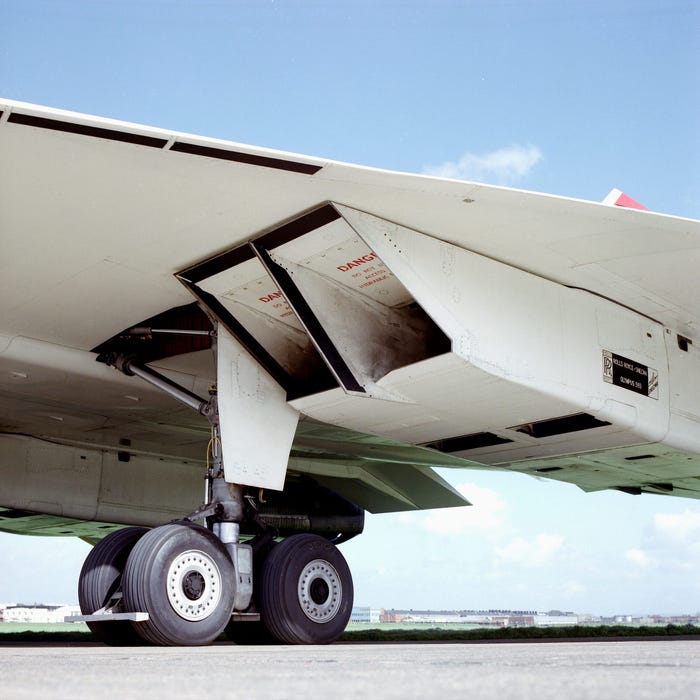
To reach supersonic speeds, you need an incredibly sleek aircraft. And to be able to land with such a streamlined aircraft, the hanging nose was invented.
Reconstructing an icon
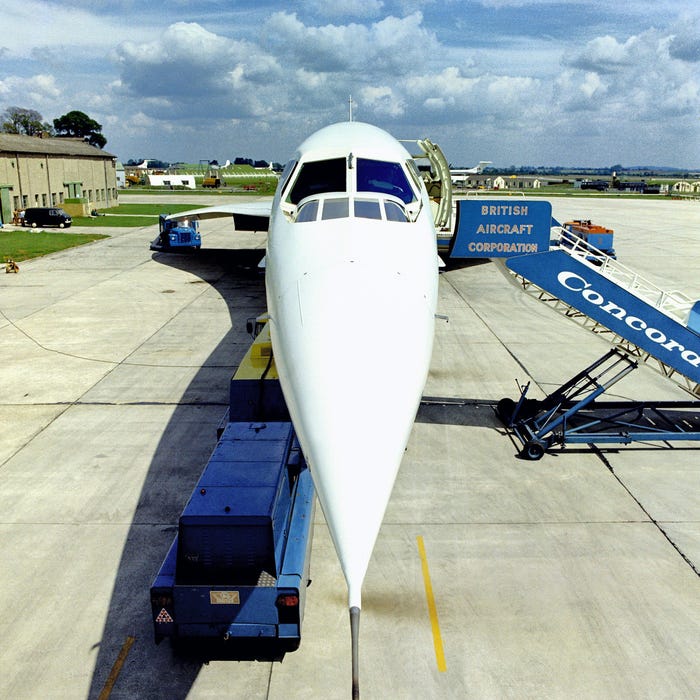
Milan explains that even the droopy toe was a functional decision.
"If the landing is initiated with a straight nose, the pilots cannot see the runway due to the length of the nose and the sharp approach angle. Therefore, the nose is tiltable."

And when you think of the Concorde, you immediately think of its iconic wings.
This shape is called a delta wing, after the Greek letter delta (Δ).
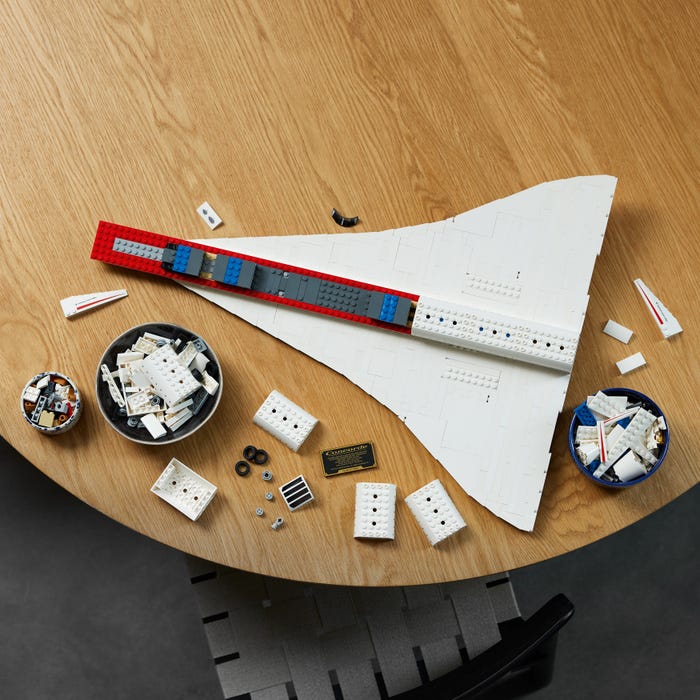
“We spent a lot of time on the wing,” says Milan. "The entire center section of the plane is built sideways, so the studs on the bricks are not in their usual orientation. This gave us the opportunity to create a very solid wing and give the LEGO model a smooth underside."
Milan and his team paid almost as much attention to their design as the engineers of the real Concorde, including the standard.
"We wanted the stand to give the impression that the Concorde is weightless. That is why we opted for a thin, slightly curved stand and a newly designed nameplate with a brass look."
Because the wing is so thin, it was also a challenge to integrate the landing gear.
"We wanted to give the model landing gear, but the frame turned out to be thicker than the wing."
Fortunately, Milan's experience – he also designed the LEGO NASA Space Shuttle Discovery, another technical tour de force – came in handy here.
"The experience I gained designing the Space Shuttle helped a lot. For Concorde, we wanted a mechanism that could both lower and retract the landing gear."
For this, Milan and his team had to design a structure that is almost as long as the set (approx. 105 cm) and that can lower the three landing gears at different speeds. All this had to fit in the very narrow hull, without hindering the interior.
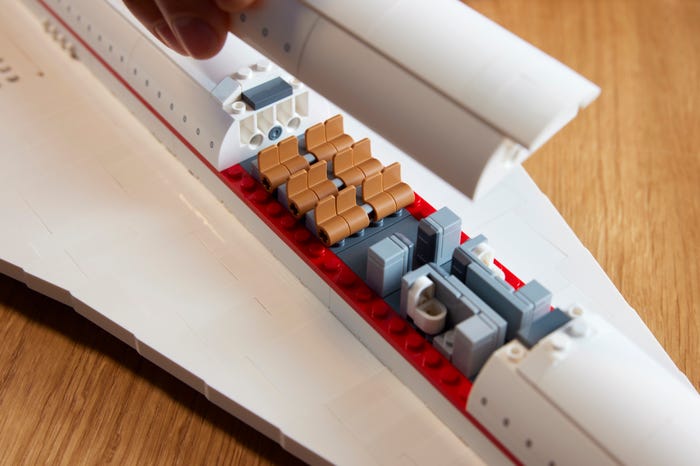
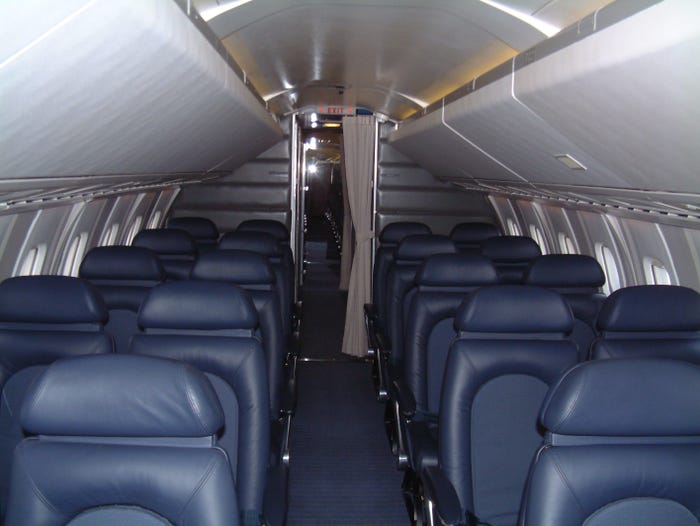
When we asked Milan how they succeeded, he had to laugh.
"With a lot of trial and error!"
We won't reveal any more, because you have to build this model to believe it. The dimensions of this set (approx. 105 cm long and approx. 43 cm wide) alone say enough. In fact, the LEGO Icons Concorde is so technical that we added it to our list of most challenging sets for adults.
The fastest in your LEGO® collection
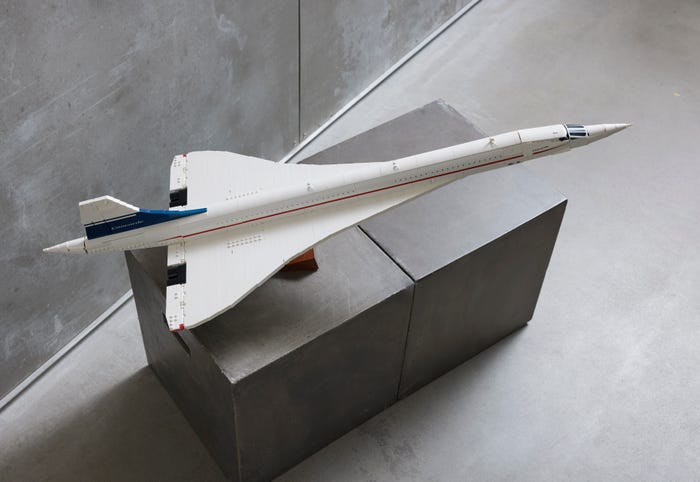
Milan and his team have designed dozens of variations of the model, often with the help of the Airbus Heritage Team, which has access to all Concorde archives.
Together they created a faithful model with a tilting drooping nose, working landing gear, a retractable tailwheel and delta wings with movable elevons or hinged upper and lower rudders.
Whether you are fascinated by the Concorde or are just a fan of beautiful design, this supersonic new set is a real must-have.
AIRBUS and CONCORDE are registered trademarks of Airbus.
-

LEGO Disney Castles
READ MORE -

LEGO history - The Minifigure has been around for 40 years!
READ MORE -
LEGO Star Wars characters
READ MORE -
What is LEGO voice?
READ MORE -

Play LEGO Games online
READ MORE -

Discover your family tree with LEGO
READ MORE -

The 8 best sets to build with in the fall
READ MORE -
The best LEGO® Space sets for adults
READ MORE -

People and their emotions
READ MORE
LATEST LEGO SETS
-

 Promotion
PromotionLEGO Mateo's Off-Road Car 71471 Dreamzzz
Prix habituel 65,00 DKKPrix habituelPrix unitaire / par77,00 DKKPrix promotionnel 65,00 DKKPromotion -
LEGO Expansion Set: Bowser's Car 71431 Super Mario
Prix habituel 194,00 DKKPrix habituelPrix unitaire / par229,00 DKKPrix promotionnel 194,00 DKKPromotion -
LEGO Expansion Set: Yoshi's Peculiar Forest 71428 SuperMario
Prix habituel 65,00 DKKPrix habituelPrix unitaire / par77,00 DKKPrix promotionnel 65,00 DKKPromotion -
LEGO Space Base and Rocket Launch Pad 60434 City
Prix habituel 1.123,00 DKKPrix habituelPrix unitaire / par1.066,00 DKKPrix promotionnel 1.123,00 DKK -

 Promotion
PromotionLEGO Modular Space Station 60433 City
Prix habituel 647,00 DKKPrix habituelPrix unitaire / par761,00 DKKPrix promotionnel 647,00 DKKPromotion -
LEGO Mining Asteroids in Space 60429 City
Prix habituel 126,00 DKKPrix habituelPrix unitaire / par153,00 DKKPrix promotionnel 126,00 DKKPromotion -
LEGO Prison Island Police Station 60419 City
Prix habituel 643,00 DKKPrix habituelPrix unitaire / par0,00 DKKPrix promotionnel 643,00 DKK -
LEGO Police Car and Muscle Car Chase 60415 City
Prix habituel 126,00 DKKPrix habituelPrix unitaire / par153,00 DKKPrix promotionnel 126,00 DKKPromotion -
LEGO Fire Station with Aerial Ladder Vehicle 60414 City
Prix habituel 514,00 DKKPrix habituelPrix unitaire / par609,00 DKKPrix promotionnel 514,00 DKKPromotion -
LEGO Fire Department Helicopter 60411 City
Prix habituel 65,00 DKKPrix habituelPrix unitaire / par77,00 DKKPrix promotionnel 65,00 DKKPromotion
SELECTED FOR YOU
-
LEGO Statue of Liberty 21042 Architecture
Prix habituel 647,00 DKKPrix habituelPrix unitaire / par761,00 DKKPrix promotionnel 647,00 DKKPromotion -
LEGO Paris with Eiffel Tower 21044 Architecture
Prix habituel 324,00 DKKPrix habituelPrix unitaire / par381,00 DKKPrix promotionnel 324,00 DKKPromotion -
LEGO Trafalgar Square London 21045 Architecture
Prix habituel 761,00 DKKPrix habituelPrix unitaire / par -
LEGO The Singapore Skyline 21057 Architecture
Prix habituel 381,00 DKKPrix habituelPrix unitaire / par457,00 DKKPrix promotionnel 381,00 DKKPromotion -

 Promotion
PromotionLEGO Pyramid of Giza 21058 Architecture
Prix habituel 906,00 DKKPrix habituelPrix unitaire / par1.066,00 DKKPrix promotionnel 906,00 DKKPromotion -
LEGO Syndney Opera House 10234 Creator Expert
Prix habituel 3.272,00 DKKPrix habituelPrix unitaire / par -
LEGO Tower Bridge from London 10214 Creator Expert
Prix habituel 3.424,00 DKKPrix habituelPrix unitaire / par -
LEGO Taj Mahal India 2017 Version 10256 Creator Expert
Prix habituel 3.424,00 DKKPrix habituelPrix unitaire / par -
LEGO Las Vegas Skyline 21047 Architecture
Prix habituel 989,00 DKKPrix habituelPrix unitaire / par -
LEGO Build your own Architecture buildings with this set Studio 21050 Architecture
Prix habituel 3.424,00 DKKPrix habituelPrix unitaire / par -
LEGO The White House 21054 Architecture
Prix habituel 837,00 DKKPrix habituelPrix unitaire / par -
LEGO Solomon R. Guggenheim Museum 21004 Architecture
Prix habituel 1.332,00 DKKPrix habituelPrix unitaire / par -
LEGO The Eiffel Tower from LEGO 21019 Architecture (USED)
Prix habituel 609,00 DKKPrix habituelPrix unitaire / par -
LEGO Taj Mahal 21056 Architecture
Prix habituel 989,00 DKKPrix habituelPrix unitaire / par0,00 DKKPrix promotionnel 989,00 DKK -
LEGO Paris Postcard 40568 Creator
Prix habituel 115,00 DKKPrix habituelPrix unitaire / par -
LEGO The LEGO® House 21037 Architecture
Prix habituel 609,00 DKKPrix habituelPrix unitaire / par0,00 DKKPrix promotionnel 609,00 DKK -
LEGO The Flatiron Building 21023 Architecture
Prix habituel 913,00 DKKPrix habituelPrix unitaire / par -
LEGO The London Skyline 21034 Architecture
Prix habituel 305,00 DKKPrix habituelPrix unitaire / par -
LEGO The Trafalgar Square London 21045 Architecture
Prix habituel 761,00 DKKPrix habituelPrix unitaire / par -
LEGO The White House 21054 Architecture
Prix habituel 761,00 DKKPrix habituelPrix unitaire / par -
LEGO Paris with Eiffel Tower 21044 Architecture
Prix habituel 381,00 DKKPrix habituelPrix unitaire / par -
LEGO The Singapore Skyline 21057 Architecture
Prix habituel 388,00 DKKPrix habituelPrix unitaire / par457,00 DKKPrix promotionnel 388,00 DKKPromotion -
LEGO The Burj Khaliffa 21031 Architecture
Prix habituel 305,00 DKKPrix habituelPrix unitaire / par -
LEGO London Postcard with Big Ben 40569 Creator
Prix habituel 115,00 DKKPrix habituelPrix unitaire / par -
LEGO Syndney Opera House 10234 Creator Expert (USED)
Prix habituel 2.283,00 DKKPrix habituelPrix unitaire / par
-
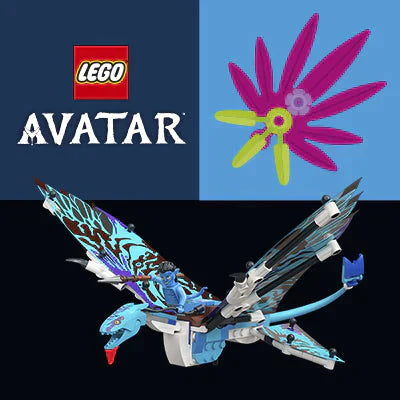
LEGO Avatar
LEGO Avatar: Dive into the wonderful world of Pandora! Build with Jake...
-

LEGO Icons
LEGO collectors love these sets. These sets are especially intended for AFOLS,...
-

LEGO Classic
Discover endless building fun with LEGO Classic sets! This collection offers a...







































































